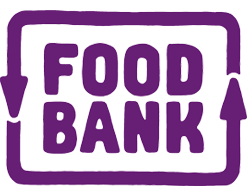Monthly income turns to charity greed
Posted by: mermaid
22nd Oct 2009 11:50pm
This was met with much distaste amongst the large pool of volunteers, who questioned why? The manager shared the same view and set off to identify the need vs greed syndrome and this is what we learned.......
more than $210 billion of institutionalised ''charity'' is now part of Australia's society and is embedded in the economy rather than being an optional extra. Old-fashioned charity is just $9 billion, 4 per cent of the total or less than 3 per cent if we acknowledge governments' financial support to charities.
There are approximately 10,400 charities in Australia with almost 12,000 outlets or branches.
120,000 staff are employees vs tens of thousands of volunteers; this figure does not include volunteers who work for schools, clubs and associations. Total wages are about $3.9 billion.
Salvation Army (eastern and southern divisions only) revenue approx $650 million, smaller average less than $800,000 per year (a extraordinary figure).
Compare these figures to an average business employing staff, with a revenue of $3.8 million - or approx five times the average charity.
Reality is charities are a business and these figures are Australian, given the number of charity organisations in Australia also exist worldwide the math just does not add up.
When presenting these figures to senior management, the manager was told rising inflation restricted the charity from performing.
The result, the manager and 3/4's of the pooled volunteers left and within 2 years the charity have employed 4 managers. The days of charity truly have gone!
What are your thoughts?
Gemma2759
- 17th Nov 2010 08:48am
Good comment SereneBee: I personally would like to know what is the best way to donate goods to these charities. I would like to know is it best to leave goods on hangers? or fold and stack them. I actually take pride in what i donate and would not donate anything I would not use myself. I actually thought you would have washing machines and laundry facilities to assist with the amount of clothing coming into the store. Leaving things in bins and beside bins is not desirable.
Maybe a collection point at the local tip would be a good place to start........... Tips are no longer the dirty undesirable place anymore. We are also charged so much to take rubbish there so why not be a collection point for old electricals, computers etc and people could visit and pay nominal amounts for goods found or obtained and this money could be donated to charity.
Come on people donate only goods worthy to be used. The charities do not want your rubbish, it costs them so much to dispose of the rubbish. That is why a lot of bins and collection points have been closed down.
Help Caféstudy members by responding to their questions, or ask your own in Café Chat, and you will get the chance of earning extra rewards. Caféstudy will match these and donate equally to our two chosen Australian charities.



